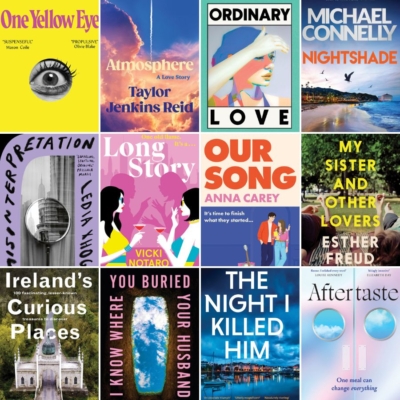When we are all wearing masks, we can’t know if someone we meet is smiling or frowning. In this pandemic, simple eye contact has become more important than ever, when even the quickest of passing glances can connect us and communicate a quick greeting or message of solidarity. And right now, that’s a valuable thing, as Professor Marissa King describes …
Sit three feet apart. Try to gaze between the brows. Maintain direct eye contact. Don’t touch. Sit in silence. Be still and slow your breath “until it is ‘almost unnoticeable’”. At least an hour of uninterrupted gazing is ideal, according to artist Marina Abramovic. She spent eight hours a day, six days a week, for nearly three months staring into the eyes of over 1,500 strangers at the Museum of Modern Art in New York as part of her 2010 performance, The Artist Is Present.
“Nobody could imagine that anybody would take time to sit and just engage in mutual gaze with me,” reflected Abramovic. People camped out on 53rd Street to get a chance to sit with the striking Serbian performance artist. Many cried. Some laughed. A few put their hands on their hearts. One man commemorated the 21 times he sat with Marina with a tattoo. “There was so much pain and loneliness. There’s so many incredible things when you look in somebody else’s eyes. Because in the gaze with that total stranger, when you never even say one word – everything happened.”
Abramovic believes our lack of eye contact is socially crippling. Humans have a profound need to feel seen, heard, and understood. But it is a privilege we are not frequently granted. “What is so beautiful about the MoMA performance,” according to Klaus Biesenbach, the former chief curator at the museum, is that “she’s treating, actually, every human being she encounters with the same attention and same respect. That is pretty shocking. And some people are shocked by this. And some people think they deserve this attention and they are finally where they should be. And others fall in love with her.”
How is it possible to fall in love with someone without every speaking to them? Love, according to Barbara Fredrickson, Professor of Psychology at the University of North Carolina, is an emotion. Like all emotions, it is created in brief ephemeral interactions. Fleeting moments – like those Abramovic sought to create – determine the quality of our interactions. Jane Dutton, a professor emerita at the University of Michigan, calls these interactions “high-quality connections”. According to Dutton, John Paul Stephens, and Emily Heaphy, they arouse or increase energy, positive regard, or mutuality. As therapist Lisa Uihlein says, “It is this sense of your aliveness, your beingness, your presence. That’s what in my experience is so enriching about being with another and being in relationships. It is really the wowness of being alive in the present moment.” Unlike love, these interactions aren’t necessarily positive in the usual sense. They aren’t necessarily happy. But they have a high emotional carrying capacity. This allows them to hold more emotion, both positive and negative, than typical interactions. It makes them resilient and allows them to bounce back.
Our bodies respond physically when we are in high-quality interactions: blood pressure lowers, heart rate slows, oxytocin is released. You can literally feel a high-quality connection. This may help explain why more than half a million people gathered to witness Abramovic connect with strangers.
The ephemeral potential of connections – a fleeting interaction in an elevator can produce the same effect as a beloved’s kiss upon the forehead – helps explain one of the more puzzling features of social life. Even short interactions can have a transformative effect on our life and sense of wellbeing.
While our networks are the constellations created through repeated interaction, brief moments are central to our emotional experience. Imagine going to order a coffee. You approach the barista, ask him how his day is going, make eye contact, and smile as you hand over your credit card. Now picture going for a coffee, but being in a hurry. You order and pay as efficiently as possible. A study by Gillian Sandstrom and Elizabeth Dunn at the University of British Columbia randomly assigned people to one of these two scenarios. Having a brief social interaction with the barista made people happier, largely because they felt a stronger sense of belonging.
A glance and a smile from someone while you are walking down the street can have the same effect. At a Midwestern university, a research assistant walked by 282 strangers and either looked them in the eye and smiled, looked them in the eye without smiling, or looked in the direction of the person but past them. In German there is an expression for the last behaviour: wie Luft behandeln, “to be looked at as though air”. A second experimenter then approached. Without mentioning the look or lack thereof, the experimenter asked the unsuspecting walker, “Within the last minute, how disconnected do you feel from others?”. Being acknowledged with a smile, even by a stranger, led to a greater sense of social connection – but only among participants who were aware of the smile. For the 55 per cent of people who didn’t notice the smile and gaze, their sense of social connection was no different than if they had been looked at as though they were air.
Spending a couple of minutes casually interacting with a stranger or barista can make us as happy as spending the same amount of time with our romantic partner. A study led by researchers at the University of British Columbia found that conversing with a stranger can be as pleasant as communing with a loved one because we tend to try to put our best foot forward when interacting with a stranger. The very act of trying to seem pleasant actually makes us feel pleasant.
Individuals who make direct eye contact (within reasonable limits) are perceived to be more likeable, smarter, credible, attractive, and powerful than people who look away.
Innately, we have the capacity and know how to have transformative connections, even with strangers – when we try. Things that we do every day are at the heart of powerful social connection. But we rarely take the time to reflect on them. Truly seeing, hearing, and listening to another leads to connection. Too often, however, we are either too hurried or afraid to deeply connect.
“The world is moving so fast now. People barely have an attention span at all,” noted Chrissie Iles, a curator at the Whitney Museum of American Art, when describing Marina Abramovic’s work. “She slows everybody’s brain down. She asks us to stay there for quite a length of time, which we are not used to doing. She transforms us as a result.”
When we are in a rush, our ability to connect with others – whether friends, family, colleagues, or strangers – is impaired. Being hurried and harried impairs our ability to read and understand others’ emotional expressions, from their gaze to their verbal intonation. When people are distracted, stressed, or under time pressure, they are much more likely to be self-absorbed and egocentric. They don’t have the ability to read others well.
Imagine you are walking down a sidewalk after leaving a coffee shop on a brisk fall day. A stranger walking alone is roughly twelve feet away from you on the uncrowded sidewalk. The person isn’t on his phone, smoking, or eating. He’s just walking. You stare at your shoes and don’t look at him. Will he look at you? Marina Abramovic would probably guess no.
Strangers look less than half the time. What if you glance at them? Their chances of looking at you now increase to 55 per cent. If you look at them and smile, the odds that they will make eye contact are close to 2.75 times higher than if you stared at your shoes.
If you are in Japan, the chance of your glance eliciting a smile plummets. In Japan it is two per cent. In general, how welcome eye contact is differs by culture. However, an analysis of ethnographies from 306 cultures across the globe, considered the “gold standard” for cross-cultural studies, found that eye contact was the most frequently mentioned cue of attraction. In cultures ranging from Imperial Romans to Iranians, Javanese to Jívaro, Turks to Trobriand Islanders, eye contact was positively associated with liking. In only one case (the Zulu), did eye contact have a negative connotation.
What is the optimal duration of eye contact? When people encounter strangers in shops, in hotel lobbies, or on the path and glances are exchanged, they are usually short. People feel most comfortable with roughly three seconds of eye contact. Any shorter and you seem shifty. Any longer and you may come across as overly intimate or domineering.
People are two to three times more likely in a conversation to initiate eye contact when they are listening than when they are speaking. When people are discussing intimate matters, there tends to be less eye contact. People look at each other more when they are cooperating than when they are competing.
When someone is looking straight at you, they are hard to ignore. From birth, infants prefer a direct mutual gaze over averted eyes. A direct gaze is detected faster, generates more physical arousal, and makes hearts race. Joint attention, empathy, and memory all increase when we look straight at each other. Individuals who make direct eye contact (within reasonable limits) are perceived to be more likeable, smarter, credible, attractive, and powerful than people who look away.
Whether it’s affection, amusement, arrogance, or annoyance, our eyes convey how we feel. And the ability to read another person’s eyes is one of the best predictors of a person’s social intelligence. Simon Baron-Cohen initially developed the “reading the mind in the eyes” test to diagnose autism in the late 1990s. (You can take the test here: socialintelligence.labinthewild.org/mite) The test presents 36 black-and-white photographs of the eyes of actors and actresses who are conveying different emotional states. For each photograph, four potential emotional states are presented. Is the man with the furrowed brow upset or annoyed? Is the man with the cocked bushy eyebrow uneasy or friendly? The better you are at inferring someone’s mental state by looking at their eyes, the more likely you are to be prosocial, perform well in groups, and respond emphatically.
So look into someone’s eyes, but don’t look for too long. The psychologist Giovanni Caputo found that ten minutes of mutual gazing in low illumination can lead people to lose their connection with reality. It also produces odd sensations. Among those recruited to engage in prolonged staring, there were frequent reports of facial disfigurations and “hallucinatory-like phenomena of strange-face apparitions.” Reports of time slowing down were also quite common. Perhaps it is worth a try?

From Social Chemistry: Decoding the Patterns of Human Connection, by Marissa King, Dutton, out now.
LOVETHEGLOSS.IE?
Sign up to our MAILING LIST now for a roundup of the latest fashion, beauty, interiors and entertaining news from THE GLOSS MAGAZINE’s daily dispatches.











